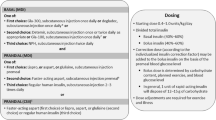Summary
The effectiveness of a new beta-D-galactosidase pellet formation in the treatment of lactose intolerance was studied.
The encapsuled beta-D-galactosidase (lactase) pellets were first tested in vitro for their enzymatic activity within an environment simulating gastric conditions and subsequently within an environment simulating duodenal conditions. Effectiveness was measured by the % of glucose formed by hydrolysis of lactose. The pellets were found to retain their enzymatic activity in gastric pH conditions (mean 69±1mg/dl glucose) and were found to hydrolyse lactose in human duodenal fluid (106.35±1 mg/dl).
Finally the effectiveness of the new lactase formation on glucose absorption was studied in 8 lactose intolerant subjects in a randomized, double blind, crossover trial. After fasting, the subjects were given one capsule containing 100 u/ml beta-galactosidase (i.e. 10 pellets of 10 u/ml each) or one capsule containing placebo pellets, followed by 100g lactose dissolved in water. The washout period between lactose challenges was one week. Plasma glucose concentrations were measured before and at intervals after the challenges and the subjects completed symptom questionnaires every eight hours for 24 hours.
Results showed a statistically significant in plasma glucose levels 30, 60, 90 and 120 min after lactose ingestion (repeated measures analysis of variance, p<0.01). Subjective ratings of the severity of abdominal cramping, belching, flatulence, vomiting and diarrhoea were significantly decreased following ingestion of the lactase pellets and lactose (no incidence of diarrhoea) compared with after ingestion of placebo and lactose.
The results of the study were considered to be very promising as the beta-D-galactosidase formulation (which was produced at very low cost and with great ease) resisted inactivation in the stomach, effectively transformed lactose to glucose in vivo and reduced symptoms of lactose intolerance.
Similar content being viewed by others
References
Pray W.S., (1990): Lactose intolerance. U.S. Pharm., 15:24,26, 28–29.
Hammond J.B., Littman A., (1985): Disaccharide malabsorption. In: Berk, J.E., (Ed.), Bochus gastroenterology, Vol. 3, 4th ed. Philadelphia, Saunders, pp. 1703–1717.
Scrimshaw N.S., Murray E.B (1988): The acceptability of milk and milk products in populations with a high prevalence of lactose intolerance. Am. J. Clin. Nutr., 48(Suppl4), 1079–1159.
Jeffrey A., (1987): Efficacy of lactase-treated milk for lactose intolerant pediatric patients. Clin. Lab. Obs., 3:1, Feb. 10.
Olson R.E. (1988): Efficacy of exogenous lactase for lactose intolerance. Nutr. Rev., 46, 150–1.
Chew F., Villar J., (1988): In vitro hydrolysis with beta-galactosidase for treatment of intolerance to human milk in very low birthweight infants. Acta Pediatr. Scand., 77, 601–602.
Fernando Lami et al. (1988): Efficacy of addition of exogenous lactase to milk in adult lactase deficiency. Am. J. Gastroenterol., 83, 1145.
DiPalma J.A., Collins M.S. (1989): Enzyme replacement for lactose malabsorption using a beta-D-galactosidase. J. Clin. Gastroenterol., 11, 290–3.
Sanders S.W., Tolman K.G., Reitberg D.P. (1992): Effect of a single dose of lactase on symptoms and expired hydrogen after lactose challenge in lactose-intolerant subjects. Clin. Pharm., 11, 533–538.
Gaska J.A. (1990): Treatment of lactose intolerance. Am. Drug, 202, 36–40, 42–43.
Arnott H. (1992): Lactose intolerance-its causes and treatment. On. Contin. Pract., 19, 30–32.
Esaka M., Suzuki K., Kubota K. (1985): Agric. Biol. Chem., 49, 2955–2960.
Kurz G., Wallenfels K. (1974): Bergmeyer, H.U. (Ed.), Methoden der enzymatischen Analyse 3 Aufl. Bd. 2. S. pp. 1225–1229 S. pp. 1324–1327, Verlag Chemie, Weinheim; and Bergmeyer, H.U. (Ed.), Methods of enzymatic analysis 2nd ed. Vol3, pp. 1180–1184 and pp. 1279–1282, Verlag Chemie, Weinheim, Academic Press, New York.
Beutler H.O. (1984): Bergmeyer, H.U. (Ed.), Methods of enzymatic analysis 3rd ed. vol. VI, pp. 104–112, Verlag Chemie, Weinheim.
Moskowitz M., Curtis C., Galaver J. (1987): Does oral enzyme replacement therapy reverse intestinal lactose malabsorption? Am. J. Gastroenterol., 82, 632–635.
Onwulata C.I., Rao D.R., Vankineni P. (1989): Relative efficiency of yogurt, sweet acidophilus milk, hydrolysedlactose milk and a commercial lactase tablet in alleviating lactose maldigestion. Am. J. Clin. Nutr., 49, 1233–1237.
Arola H., Koivula T., Jodely H. (1988): Comparison of indirect diagnostic methods for hypolactasia. Scand. J. Gastroenterol., 23, 351–357.
Dekker R.F. (1989): Immobilization of a lactase onto a magnetic support by covalent attachment to polyethylenediamine-glutaraldehyde-activated magnets. Appl. Biochem. Biotechnol., 22 (3), 289–310.
Author information
Authors and Affiliations
Rights and permissions
About this article
Cite this article
Xenos, K., Kyroudis, S., Anagnostidis, A. et al. Treatment of lactose intolerance with exogenous beta-D-galactosidase in pellet form. European Journal of Drug Metabolism and Pharmacokinetics 23, 350–355 (1998). https://doi.org/10.1007/BF03189363
Issue Date:
DOI: https://doi.org/10.1007/BF03189363




